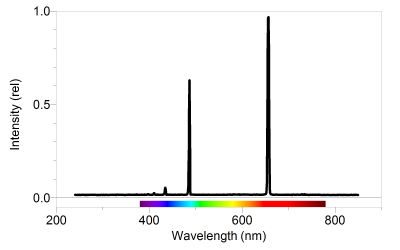Ch7 lec 2
(4/21/20, bes)
Additional Light Lab Info
In our lab discussion i did not introduce you to the "photodiode array" (PDA) <-- not "public display of affection" --> instrument. A PDA is very similar to an electronic version of a "glass prism." A prism separates the wavelengths of light into the individual color components; when a rainbow is observed, the tiny water droplets are acting as a prism. If we were to direct "white" light into the PDA (which contains a prims and more), then you could measure/collect a "spectrum" similar to the "broad," featureless spectrum (red) on the far right figure...note the wavelengths are in nanometers (nm). This figure is complicated by the fact that these authors used a technique to separate the light prior to it entering the PDA, so that is why there are all of the other "narrow" spectra also shown.
 |
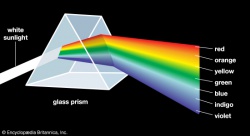 |
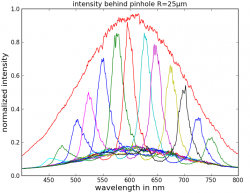
|
Sorry, i know this is a little confusing...hang in there...here is another example...I think you should be familiar with LEDs (light emitting diodes)...they come in different colors. If we were to meet in person for the "Light Lab", then i would have shown you the PDA spectrum of the LEDs. In the figure below, the red, green, and blue LEDs when shown into the PDA would result in a spectrum with a peak at 650 nm - red, 570 nm - green, and 480 nm - blue (pls note, there are 3 separate spectra on this one graph).
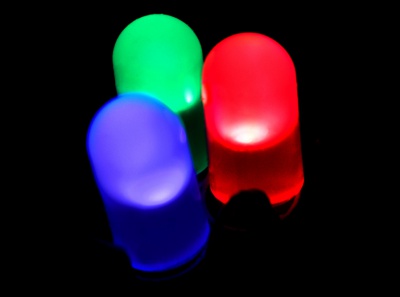 |
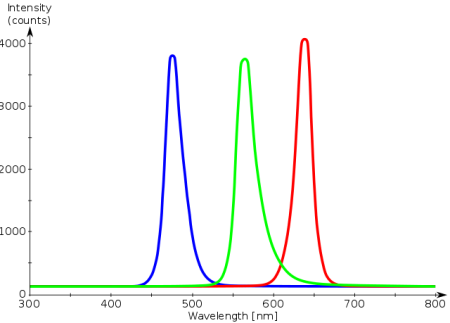
|
Problem very similar to #2 from lab
Complete the following table:
| Wavelength (nm) | Wavelength (m) | Frequency (1/s) | Energy (J) |
| 650 | |||
| 570 | |||
| 480 |
Sec 7.3: Bohr's Theory of the Hydrogen Atom
An experiment i would have done with you in the lab would have involved the experimental setup shown in Figure 7.6 of your text. The light source would have been a similar to a fluorescent tube, but the gas inside of the tube would have been hydrogen gas (H2) (see Figure 7.7). Now you don't really need to know this level of detail, but when a high voltage is applied across the "discharge tube" the H2 gas breaks into individual H-atoms that then produce the "emission spectrum"...show in a "line spectrum" in Figure 7.6. The real emission spectrum would look like this...with emission lines at 410 nm (very small), 434 nm (small), 486 nm (medium), and 656 nm (largest):
